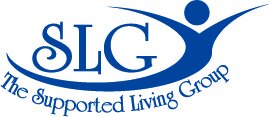The Healing Power of Nature: How Outdoor Environments Support Brain Injury Recovery in Connecticut
In Connecticut and across the nation, non-medical brain injury rehabilitation programs are continuously evolving to embrace more holistic, evidence-based approaches. One increasingly powerful—but often underutilized—tool in the recovery toolbox is nature itself. At The Supported Living Group (SLG), we’re integrating the proven benefits of nature exposure into our brain injury programming to support healing in mind, body, and spirit.
Emerging science, paired with lived experience, tells us something profound: nature heals.
Nature and Neuroplasticity: A Powerful Connection
Traumatic brain injuries (TBIs) often lead to complex physical, emotional, and cognitive challenges. While clinical interventions are essential, recovery is increasingly understood as a multidimensional process, one that involves connection, movement, and restoration.
As reported by Deutsche Welle, “Researchers are discovering that spending time in nature can have a positive impact on mental and physical health, particularly for those recovering from injury or trauma.” In fact, studies have shown that green environments can stimulate neuroplasticity, the brain’s ability to reorganize and form new neural connections after injury (Berman et al., 2012).
Benefits of Nature in Brain Injury Rehabilitation
At SLG, our Connecticut-based programs prioritize not just standardized non-medical cupports but human-centered recovery models that acknowledge the therapeutic role of the natural world. Here's how nature enhances brain injury recovery:
1. Stress Reduction and Emotional Regulation
A 2023 review in Frontiers in Psychology found that exposure to natural settings “reduces cortisol levels, heart rate, and symptoms of depression and anxiety.” For brain injury survivors, whose emotional regulation systems are often impacted, this is critical.
“Nature provides a form of ‘soft fascination’ that helps restore attentional capacities without overwhelming the injured brain,” notes environmental psychologist Dr. Stephen Kaplan.
2. Improved Cognitive Function
Time in natural environments has been shown to enhance working memory and executive function, two cognitive areas often impaired after brain injury. A study from the University of Michigan found that just a 50-minute walk in nature significantly improved memory performance by up to 20% (Berman et al., 2008).
3. Motivation for Physical Rehabilitation
Outdoor settings can encourage movement and physical engagement, which in turn supports motor recovery and cardiovascular health. Walking trails, gardening, and even sitting outside with peers can be catalysts for greater physical and social participation.
How SLG Integrates Nature-Based Recovery in Connecticut
At The Supported Living Group, we don’t just talk about holistic healing—we design it. Our non-medical brain injury recovery programs across Connecticut actively integrate:
Therapeutic outdoor walks and adaptive gardening activities
Community-based nature outings, such as local park visits or nature center tours
Mindfulness sessions held in green spaces to regulate stress and enhance attention
Participant-driven goals that incorporate access to fresh air and daylight as part of daily living
Nature as an Ally in Recovery
The research is clear: nature isn’t a luxury—it’s a therapeutic necessity. At SLG, we remain committed to embracing all tools that can support long-term healing and independence for our brain injury service participants.
If you or a loved one is navigating recovery from a traumatic or acquired brain injury in Connecticut, contact The Supported Living Group today to learn how our nature-informed, community-based programs can support your journey toward healing.


